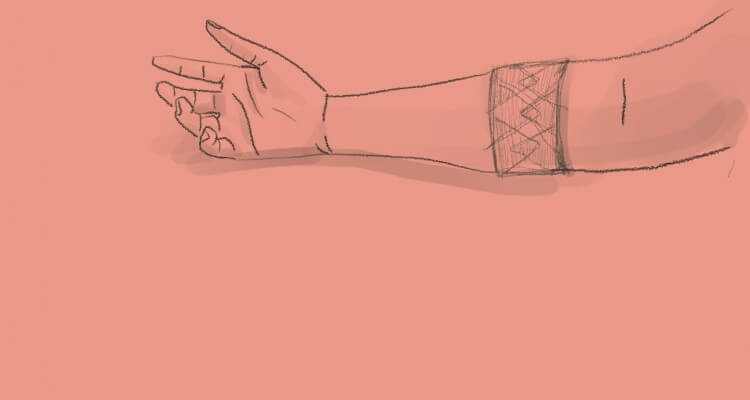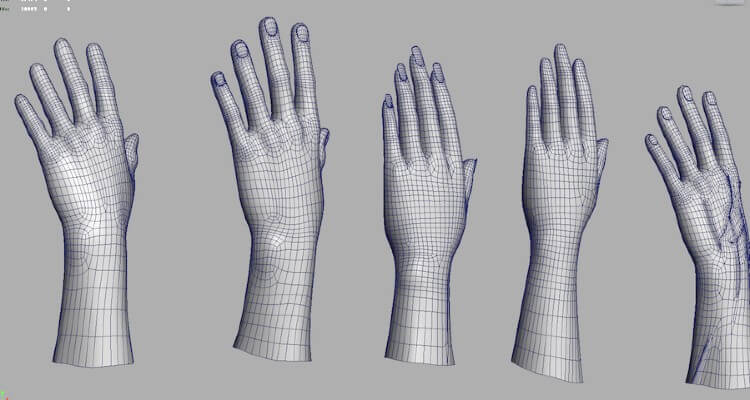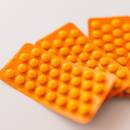Future of Fingering: Lessons Learned from the Award-Winning Tentilex Project
Why digital stimulation is an area of sexual pleasure in desperate need of innovation.

When I started dating my first girlfriend, I turned to my friends for advice on the one sexual act I was most apprehensive about: Fingering.
I had been fingered before, but the thought of doing it to someone else made me nervous.
Questions swirled through my mind. What do I do with the fingers that aren’t actively participating? Are my nails too long? How can I penetrate her without accidentally injuring her? My anxieties continued from there.
After asking a variety of queer and hetero friends alike, I gathered a handful of common responses:
“You’re a woman, shouldn’t you know what feels good?“
“There’s no technique, you’ll just figure it out.“
“Why are you worried? Fingering is something you do when you’re like 13.“
This dismissive attitude towards fingering was reflected in the limited selection of educational materials available. A Cosmopolitan guide, one vague mention in an Autostraddle article… also good luck finding anything that didn’t focus on fingering someone with a vulva. The existing selection of fingering-specific sex toys was pretty grim as well.
In May 2021, I channeled this fingering frustration into the Rainbows End Sex Tech Hackathon with a team of (mostly queer) women. Together, we built Tentilex, a wearable armband that records your hand movements and generates a live 3D model from those movements—and we won.
Based on my research for the hackathon, and the reaction to our project, I realized that there could be a more hopeful and informative future for fingering.
Visualizing the experience of fingering

From the start, our team’s mission was to build something that enables people to visualize their fingering experience and simultaneously cultivate a common language around fingering.
This prompted a discussion about how exactly we could visualize fingering in a way that is both educational and fun. We cycled through many ideas—including tracking finger joint angles to create a 3D map of the vagina or anus, underwear with ultrasound sensors, and augmented reality glasses.
RELATED READ: How Sex Tech Designers Can Enhance the Pleasure of Fingering
A wearable armband to enhance fingering play
Ultimately, we settled on a band worn on the upper forearm. It’s easy to wear, keeps your hands free to preserve skin-to-skin contact, and practically could hold the sensors without sacrificing style.
Electromyography (EMG) sensors as the input
Inspired by technologies like the Myo Gesture Control Armband and ShArc Shape Form sensors (both traditionally used for prosthetics and robotics), we decided to use EMG sensors as the input for Tentilex. Paired with an embedded ARM processor, these sensors enabled us to monitor hand shape in real time.
Output as a 3D hand animation

With that input, we could use Arduino to connect the band to a 3D modelling software. This software would then generate an avatar that visualizes the movements on a local server.
Isolating the motions allows people to focus and learn from what their hands are actually doing—an aspect that is often overlooked during (or quickly forgotten after) sex. Wearers can play back these animations on their own or with a partner.
Standing out amongst a crowd
By focusing on fingering, our team could focus on inclusivity. We weren’t attached to any specific genders or parts of the body and as a result, created a product that was widely relatable.
“The [Tentilex] project really stood out as it was tackling a topic that applies to just about anyone who has sex, and yet is such an overlooked part of the human sexual dictionary. It was one of those ideas that made everyone think ‘how does something like this not exist yet?’” says Alice Stewart, one of the hackathon organizers and founder of Touchy-Feely Tech.
I loved the potential of this idea as a way of opening up all sorts of conversations around things like body augmentation and extension, accessibility, wearables, experimental [human-computer interaction] and highlighting the importance of foreplay and body literacy.
Tatyannah King, sexual health blogger and one of the hackathon judges, echoed this: “Tentilex immediately impressed me because this creation is a gender-neutral product that enhances fingering and as a sex blogger who often reviews sex toys, it’s not often that I see sex toys that are designed for that purpose.”
She continued: “Sometimes when using sex toys, the design is so complex that you’re expected to automatically know how to use them in one particular way, but with Tentilex, I’m certain that even beginners who have never used a sex toy before will find the product handy (no pun intended).”
Is Tentilex the future of fingering?
Probably not, given that it was a hackathon project and no one from our team is currently developing it into a business. But a project like Tentilex does highlight one stark truth: Fingering is an area of sexual pleasure in desperate need of innovation.
Image sources: TurboSquid, Roni Zaftig, Mert Arduino

















